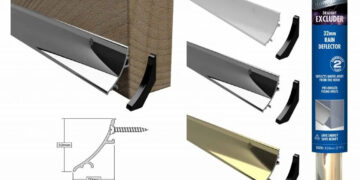Chronic pain can significantly affect a person’s quality of life, limiting daily activities, disrupting sleep, and contributing to stress and fatigue. Whether it’s persistent back pain, aching joints, or post-injury discomfort, finding an effective, non-invasive treatment is often a top priority. One proven approach is manual therapy, a hands-on technique used by certified physical therapists and orthopedic manual therapists to reduce pain and improve movement.
This article explores how manual therapy works, its key benefits, and why it’s a trusted solution for managing chronic pain and restoring mobility.
What Is Manual Therapy?
Manual therapy refers to a range of hands-on techniques used by trained therapists to assess, diagnose, and treat musculoskeletal conditions. Unlike general massage, manual therapy targets specific joints, muscles, and soft tissues to restore mobility, reduce inflammation, and alleviate pain.
Common manual therapy techniques include:
-
Joint mobilisations and manipulations
-
Soft tissue mobilisation and myofascial release
-
Trigger point therapy
-
Muscle energy techniques
-
Passive stretching
Certified Orthopedic Manual Therapists are trained to perform these techniques with precision and safety, adapting each session to the patient’s unique condition and goals.
How Manual Therapy Helps Relieve Chronic Pain
Chronic pain is often the result of long-term dysfunction in the musculoskeletal system. This can include stiff joints, scar tissue, muscle imbalances, nerve irritation, or poor posture. Manual therapist directly addresses these root causes rather than masking the symptoms.
1. Improves Joint Function
Restricted joints can lead to pain and poor movement patterns. Manual therapy helps restore proper joint motion by applying gentle, controlled forces to the affected area. This improves alignment and reduces stiffness, allowing for smoother, more comfortable movement.
2. Releases Muscle Tension and Trigger Points
Tight muscles and knots—known as trigger points—can cause pain locally and refer pain to other areas. Through targeted pressure and stretching, manual therapy breaks down these tension points, promoting muscle relaxation and reducing referred pain.
3. Enhances Blood Flow and Healing
Manual techniques stimulate circulation in muscles and tissues, promoting the delivery of oxygen and nutrients needed for healing. Better blood flow also reduces inflammation and helps flush out metabolic waste that can contribute to pain.
4. Decreases Nerve Irritation
When soft tissues or joints compress nearby nerves, it can lead to numbness, tingling, or sharp pain. By mobilising joints and releasing tight tissue, manual therapy can relieve pressure on nerves, easing symptoms and restoring normal sensation.
5. Reprograms the Nervous System
Chronic pain can become embedded in the nervous system, causing the brain to perceive pain even after the original injury has healed. Manual therapy helps “reset” these pain signals by stimulating proprioceptors (movement sensors) and promoting healthy, pain-free movement patterns.
How Manual Therapy Improves Mobility
Limited mobility is often a key contributor to chronic pain. When joints and muscles can’t move through their full range of motion, the body compensates with poor posture or inefficient movement, leading to further discomfort and injury.
Manual therapy helps by:
1. Restoring Range of Motion
Joint mobilisation and soft tissue work free up restricted areas, allowing you to move more freely and comfortably. This is especially beneficial for conditions like frozen shoulder, arthritis, or post-surgical stiffness.
2. Correcting Muscle Imbalances
Manual therapy identifies and treats overactive or underactive muscles. By addressing these imbalances, therapists help improve posture, balance, and movement coordination.
3. Improving Movement Efficiency
Pain often causes people to move awkwardly or avoid certain motions. Manual therapy supports a return to natural, efficient movement, reducing the strain on surrounding tissues and lowering the risk of further injury.
4. Supporting Exercise and Rehabilitation
Manual therapy works hand-in-hand with physiotherapy exercises. By reducing pain and improving mobility, patients can engage more fully in rehab programs, leading to faster and more effective recovery.
Conditions Commonly Treated with Manual Therapy
Manual therapy can be highly effective for a wide range of chronic pain conditions, including:
-
Lower back pain
-
Neck and shoulder pain
-
Sciatica
-
Osteoarthritis
-
Postural dysfunction
-
Fibromyalgia
-
Repetitive strain injuries (RSIs)
-
Sports injuries
-
Temporomandibular joint (TMJ) dysfunction
It’s also frequently used in post-operative recovery and rehabilitation following orthopedic surgery.
What to Expect During a Session
A session with a Certified Orthopedic Manual Therapist typically begins with a thorough assessment. This includes a review of your medical history, a physical examination, and movement testing to identify areas of restriction, weakness, or imbalance.
Based on this assessment, the therapist will develop a personalised treatment plan. Techniques may be combined and adjusted over time to match your progress and goals. Most people find manual therapy to be gentle, effective, and even relaxing, although some soreness is normal after initial sessions.Final Thoughts
Chronic pain doesn’t have to be a life sentence. Manual therapy offers a powerful, hands-on approach to relieving discomfort, restoring function, and improving your overall quality of life. By addressing the root causes of pain—rather than just the symptoms—manual therapy helps you move better, feel stronger, and regain control of your body.
Contact a Certified Orthopedic Manual Therapist if you’re dealing with ongoing pain or limited mobility. Their expert knowledge and targeted techniques could be the key to getting you back to the life you love—pain-free and in motion.














































